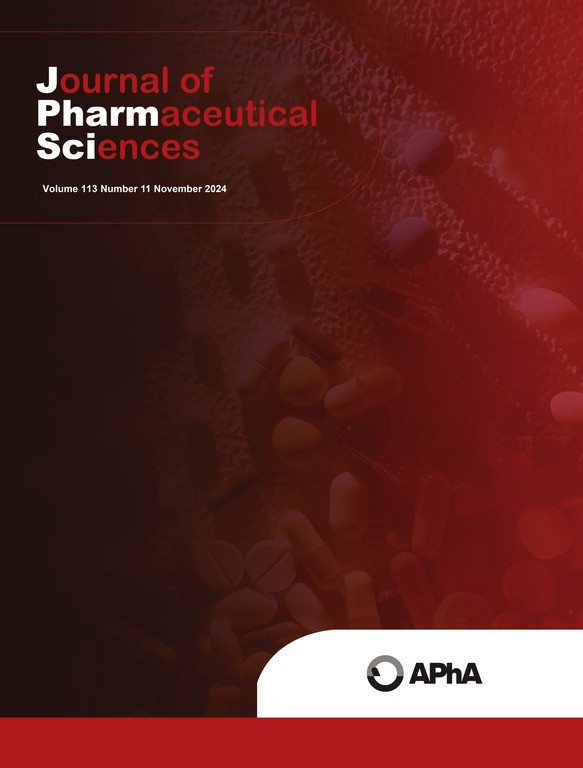A high-dose coenzyme Q10-emulgel for chronic oral therapy of deficient patients with secondary dysphagia
IF 3.7
3区 医学
Q2 CHEMISTRY, MEDICINAL
引用次数: 0
Abstract
Coenzyme Q10 (CoQ10) is the major endogenously fat-soluble antioxidant synthesized in the mitochondrion inner membrane as the electron carrier in the respiratory chain. In CoQ10-deficient patients, early high-oral doses (5–50 mg/kg/day) can constrain renal dysfunction and neurological signs. CoQ10, a typical class IV drug, with low bulk density, was dissolved at high-dose (1 g) in the oil phase (20:80 O/W) of a novel emulgel of small serving size (25 g) for its chronic administration in deficient patients with secondary dysphagia, as an alternative to maintain therapy adherence. The novelty is that CoQ10 remained dissolved in 5 g of oil phase (MCT and coconut oils) per 25 g of alginate-emulgel. This was physically stable for 9 months at 25 °C as a “weak gel” type network, with high zeta potential (‒80 mV) being then the oil droplet size (5.0 μm) successfully maintained. The emulgel showed pseudoplastic behavior and four times lower viscosities than those of a contrast fluid used for swallow studies in dysphagic patients. Chemical stability of CoQ10 was 100 % for 12 months. Emulgel administration (25 g/day) for 2 weeks increased CoQ10 plasma concentration in 3.9 times. The number of doses for high CoQ10 therapy can then be reduced, without swallowing discomfort.
一种大剂量辅酶q10乳凝胶用于慢性口服治疗伴有继发性吞咽困难的缺陷患者
辅酶Q10 (CoQ10)是主要的内源性脂溶性抗氧化剂,作为呼吸链中的电子载体在线粒体内膜合成。在辅酶q10缺乏的患者中,早期高剂量口服(5 - 50mg /kg/天)可以抑制肾功能障碍和神经症状。辅酶q10是一种典型的IV类药物,体积密度低,以高剂量(1 g)溶解在一种新型小份量(25 g)乳状液的油相(20:80 O/W)中,用于继发性吞咽困难缺乏患者的慢性给药,作为维持治疗依从性的替代方案。新颖之处在于,每25克海藻酸凝胶中,辅酶q10溶解在5克油相(MCT和椰子油)中。这种“弱凝胶”型网络在25°C下保持了9个月的物理稳定性,成功地保持了高zeta电位(-80 mV),然后油滴尺寸(5.0 μm)。乳剂表现出假塑性行为,粘度比用于吞咽困难患者吞咽研究的对比液低四倍。辅酶q10 12个月的化学稳定性为100%。乳凝胶(25 g/天)给药2周,CoQ10血浆浓度增加3.9倍。高辅酶q10治疗的剂量可以减少,没有吞咽不适。
本文章由计算机程序翻译,如有差异,请以英文原文为准。
求助全文
约1分钟内获得全文
求助全文
来源期刊
CiteScore
7.30
自引率
13.20%
发文量
367
审稿时长
33 days
期刊介绍:
The Journal of Pharmaceutical Sciences will publish original research papers, original research notes, invited topical reviews (including Minireviews), and editorial commentary and news. The area of focus shall be concepts in basic pharmaceutical science and such topics as chemical processing of pharmaceuticals, including crystallization, lyophilization, chemical stability of drugs, pharmacokinetics, biopharmaceutics, pharmacodynamics, pro-drug developments, metabolic disposition of bioactive agents, dosage form design, protein-peptide chemistry and biotechnology specifically as these relate to pharmaceutical technology, and targeted drug delivery.

 求助内容:
求助内容: 应助结果提醒方式:
应助结果提醒方式:


